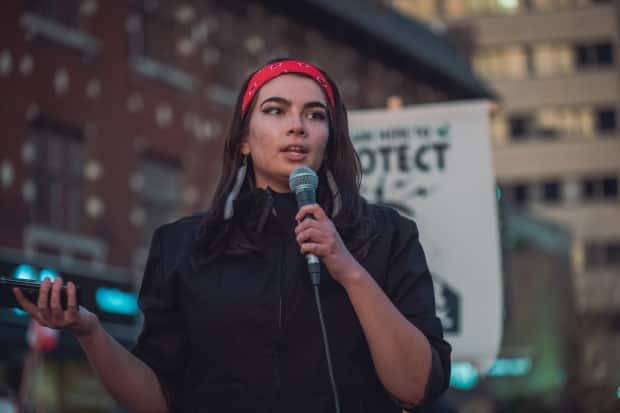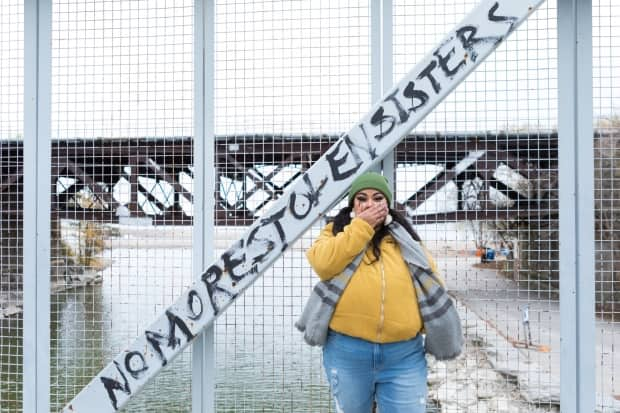Indigenous women's Instagram stories on MMIWG awareness vanish on Red Dress Day

Women in Canada who are connected to the missing and murdered Indigenous women and girls (MMIWG) movement are questioning why their social media posts disappeared on a day meant to raise awareness for the issue.
"A bunch of content exclusively relating to missing and murdered Indigenous women and girls has just gone missing overnight," said Emily Henderson, a Toronto-based Inuk arts and culture writer.
On May 5, many people in Canada wore red and hung red dresses and ribbons for Red Dress Day, which coincides with the National Day of Awareness of Missing and Murdered Indigenous Women in the United States.
Henderson, who created a four-part Instagram post Wednesday, woke up on Thursday to group messages saying the post she made, along with others meant to raise awareness for MMIWG, had vanished from her friends' Instagram stories.
"It's very suspicious that it was only missing and murdered Indigenous Women's Day posts," said Henderson, who said friends from both Canada and the U.S. had stories disappear from the app.
"On the day when we're doing the most grieving and the most processing, and this is an incredibly heavy experience for the community, that suddenly the voices, our voices, our resources, our stories are just kind of wiped without a trace or explanation."
Henderson, who often uses her social media platforms to educate people about Indigenous issues, said her post was shared over 500 times. She said it feels like Indigenous people are "being gaslit by the algorithms."
'Global technical issue,' says Instagram
On Thursday afternoon, Instagram communications released a tweet that said: "We know that some people are experiencing issues uploading and viewing stories. This is a widespread global technical issue not related to any particular topic and we're fixing it right now. We'll provide an update as soon as we can."
Shanese Steele posted a photo Wednesday of her holding her hand over her mouth beside a spray painting that says "no more stolen sisters."
She said posts are often "shadow banned" by social media apps, a practice where platforms restrict, limit, or hide content from being viewed by audiences.
"I've noticed that it's happening a lot to Black and Indigenous and brown folks who are talking about political things," said Steele, who is Anishinaabe-Métis and Trinidadian.
For Kakeka Thundersky, a community organizer in Winnipeg, days like May 5 are usually a day for the community to gather, rally and heal together.
"We've been in code red for so long and so many other communities are too. Everyone's just stuck at home on their phone, unable to gather and able to go to the rallies, unable to talk to face to face with people," said Thundersky.
She said sharing information through social media also allows people to convey messages that aren't always shared in the mainstream media.
Henderson said her options for engaging with her community in real life "have been really limited."
"The digital space in general is really, really important right now just for maintaining community connections or connections."


